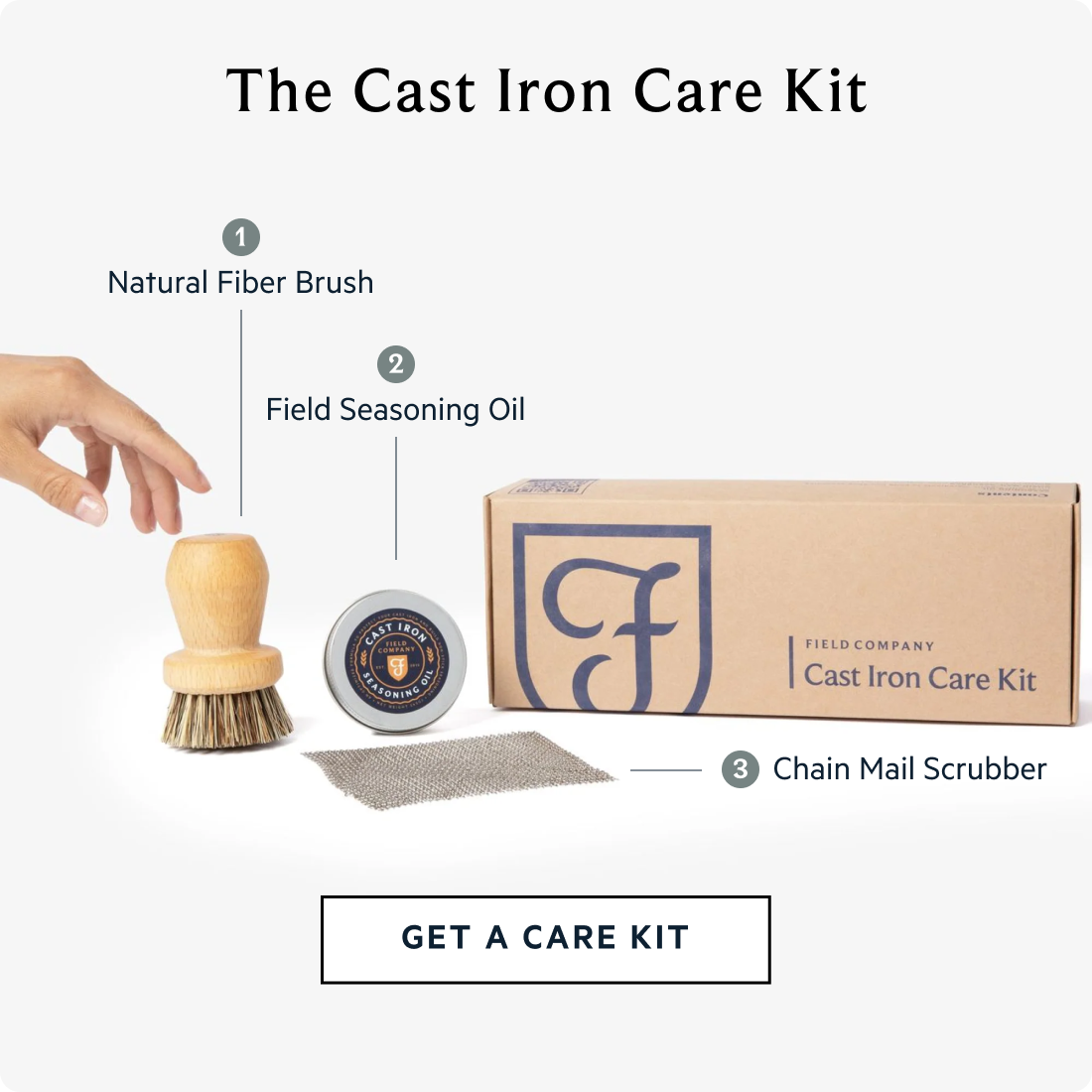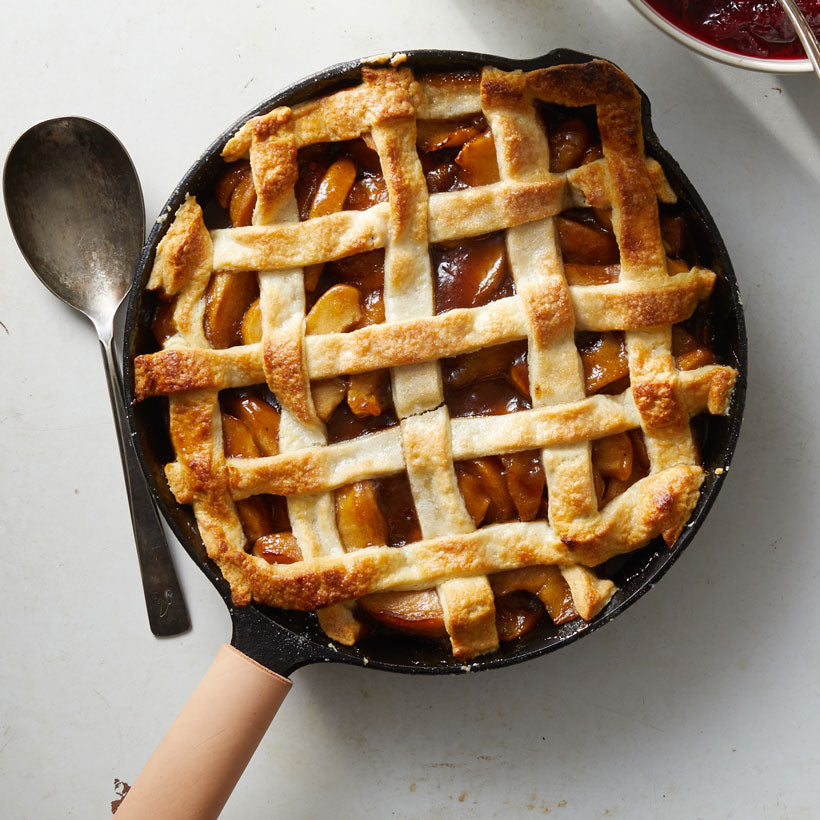Cast iron skillets have been one of my preferred pie plate substitutes for many years. In addition to being handy and naturally nonstick, cast iron retains and evenly distributes heat—two important features for achieving a crisp, evenly baked crust.

The best, flakiest pie crusts are made thanks to a winning combination of very chilled dough hitting the heat of a very hot oven. As the moisture inside pie dough evaporates, it releases steam, which is responsible for building light, tender layers of dough. Using cast iron means that the pan heats up quickly and retains a consistent temperature throughout baking. Which all adds up to beautifully baked bottom crusts (with no hint of sog).
In short, ditch the pie plate and use a cast iron skillet instead.
Cast Iron Pie-Baking Tips
Baking pies in a cast iron skillet is as easy as any other vessel. I use a No.8 Field Skillet for my recipes, which is the closest in size to a standard pie plate. But here are a few tips you can apply to any cast iron skillet pie:
Bake the pie on the lowest rack of the oven for the most golden and crisp bottom crust.
Baking temperature depends on the type of filling you’re using, but pies typically bake between 375°F to 425°F.
If the edges or surface of the pie crust begin to brown too much, tent the pie with foil and reduce the oven temperature 25° for the remainder of bake time.
Cool the pie completely in the skillet before slicing for best consistency and slicability.
When determining doneness, look for a deeply golden brown crust; blond-colored crusts are prone to getting soggy as they cool.
A properly baked pie should pop right out of the skillet after cooling, which makes for easy slicing without risk of damaging your skillet!
One Dough, Three Pies
Whether you’re baking a single-crust pie (with pecan, pumpkin and other custardy fillings), a double-crust pie (for apple and other fruit pies), or something in between (such as a lattice or other decorative top), you only need one basic pie dough. My recipe—which is perfectly sized for a No.8 Field Skillet—is proudly made with all butter, which I think yields the best flavor and texture. Once your dough is made, here’s how to prepare it for your pie.

For a single-crust pie:
On a lightly floured surface, roll out the dough for the bottom crust to ¼ inch thick.
Use a rolling pin to gently transfer the dough to the skillet.
Use one hand to gently lift the dough at the edge of the pan, and use your other hand to nudge the dough into the base of the skillet - the goal is to get the base and sides of the skillet directly lined with dough.
Trim away any excess dough with scissors, leaving just about ½ inch of excess dough all the way around the outside edge of the pan.
Tuck the excess dough under itself all around the edge, pressing it firmly up against the edge of the skillet. Crimp the edges as desired, and chill the pie until ready to fill/bake.
For a double-crust pie:
Prepare the bottom crust as directed above, but after you trim away the excess dough, fill the pie and chill it while you prepare the top crust.
Roll out the top crust as you did the bottom crust, and gently transfer to the surface of the filling.
Press the top and bottom crusts together all the way around, then trim away the excess leaving ½ inch all the way around the outside edge of the skillet.
Tuck the excess dough under itself all around the edge, pressing it firmly up against the edge of the skillet. Crimp the edges as desired, and chill the pie until ready to bake.
No matter what flavor of pie you’re planning to make—and whether you’re a pie pro or a pastry novice—try baking your next pie in a cast iron skillet. It might just be your best pie yet.
Here are three of my best pie recipes to get your started:
Pear-Cranberry Skillet Pie



Erin Jeanne McDowell is the author of The Book on Pie and The Fearless Baker, the recipe editor for PureWow and the baking consultant at large for Food52.



